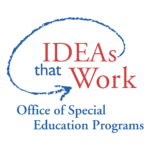This document highlights national data regarding the number of students with disabilities that are receiving a free and appropriate public education (FAPE). The data are disaggregated by gender, location of education, English language proficiency, type of disability, disciplinary removals, and by state.
Office of Special Education Programs. 2022. OSEP Fast Facts: Educational Environments of Children with Disabilities, Ages 5 (in kindergarten) through 21, Served under IDEA Part B https://sites.ed.gov/idea/osep-fast-facts-school-aged-children-5-21-served-under-idea-part-b-21/ (accessed September 16, 2022).
This document updates and supersedes the Office of Special Education and Rehabilitative Services’ (OSERS) guidance titled Questions and Answers on Discipline Procedures, issued in June 2009 and includes additional questions and answers that address topics that have arisen as the field continues to carry out the discipline provisions of IDEA and its implementing regulations. Key topics include removing a child with a disability from their current educational placement and the responsibilities of individualized education program (IEP) teams to address the behavioral needs of children with disabilities through the evaluation, reevaluation, and IEP development process to ensure the provision of a free appropriate public education (FAPE).
Office of Special Education Rehabilitative Services. 2022. Questions and Answers Addressing the Needs of Children with Disabilities and the Individuals with Disabilities Education Act's (IDEA's) Discipline Provisions
https://sites.ed.gov/idea/files/qa-addressing-the-needs-of-children-with-disabilities-and-idea-discipline-provisions.pdf (accessed September 16, 2022).
Guidance from the United States Department of Education Office of Civil Rights describes schools’ responsibilities under Section 504 to ensure nondiscrimination against students based on disability when imposing student discipline. Specifically, the guidance explains how compliance with Section 504’s requirement to provide a free appropriate public education (FAPE) to students with disabilities can assist schools in effectively supporting and responding to behavior that is based on a student’s disability and that could lead to student discipline. By using Section 504’s procedures to identify and meet the behavioral, social, emotional, and academic needs of students with disabilities as required for FAPE, schools can help prevent or reduce behaviors that might otherwise result in discipline. As the guidance explains, when schools do choose to administer discipline for students with disabilities, they must do so in a nondiscriminatory manner.
Office of Special Education Rehabilitative Services. 2022. Supporting Students with Disabilities and Avoiding the Discriminatory Use of Student Discipline under Section 504 of the Rehabilitation Act of 1973 https://www2.ed.gov/about/offices/list/ocr/docs/504-discipline-guidance.pdf?utm_content=&utm_medium=email&utm_name=&utm_source=govdelivery&utm_term= (accessed September 16, 2022).


